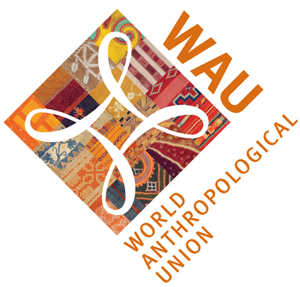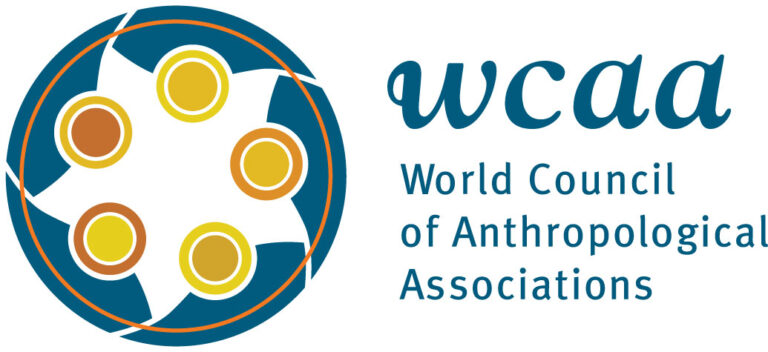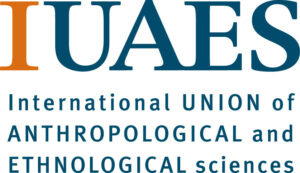Interviews with Journal Editors for Déjà Lu
For the tenth anniversary issue of Déjà Lu, we four editors—Gordon Mathews, Lía Ferrero, Joy Owen, and Leilah Vevaina—have interviewed editors of different journals featured in Déjà Lu.

Ndjio, Basile. 2020. “Death without mourning: homosexuality, homo sacer, and bearable loss in Central Africa.” Africa: The Journal of the International African Institute 90(5): 852-869.
Contemporary societies in Central Africa are known for their mourning ethos: communities often engage in endless lamentation upon the death of their loved ones. Yet people experience the death of a family member differently, depending on the deceased’s sexual identification. While the death of a person identifying as heterosexual is generally felt as unbearable, that of a person identifying as homosexual is experienced as bearable. Based on field research conducted in Cameroon, this article analyses the way in which contemporary Central African societies experience the death of persons identifying as homosexual. Drawing on Giorgio Agamben’s notion of homo sacer, the article argues that, as a result of the pervasiveness of anti-homosexual ideologies and procreationist doctrines promoting vitalis moralis or the ethics of life, childless persons identifying as homosexuals have become ‘homines sacri’ whose deaths arouse little grief from the community because their existence was perceived as ‘bare’ or useless even before their death.
Les sociétés contemporaines d’Afrique Centrale sont réputées pour leur éthique de deuil; les communautés se livrent souvent à des lamentations sans fin à la mort de leurs proches. Pourtant, les gens vivent la mort d’un membre de la famille différemment, selon l’identité sexuelle du défunt. Alors que la mort d’une personne s’identifiant comme hétérosexuelle est généralement ressentie comme insupportable, celle d’une personne s’identifiant comme homosexuelle est plutôt vécue comme supportable. Basé sur des recherches de terrain menées au Cameroun, cet article analyse la manière dont les sociétés d’Afrique Centrale font face à la mort de personnes considérées comme homosexuelles. S’appuyant sur la notion d’homo sacer de Giorgio Agamben, l’article fait valoir qu’en raison de l’omniprésence des idéologies anti-homosexuelles et des doctrines procréatrices promouvant un vitalis moralis ou une éthique de la vie, les personnes sans enfant s’identifiant comme homosexuelles sont devenues des homines sacris dont la mort suscite peu de chagrin de la part de la communauté car leur existence était déjà perçue comme «nue» ou inutile avant même leur mort.

Jopson, Teresa and Aliya Sakaran. 2020. “MAPANGAHAS NA PANANALIKSIK:
PAGBUBUO NG KAALAMAN AT KATATAGAN SA ‘GERA LABAN SA DROGA’.” Aghamtao 28: 45-73.
Bilang ambag sa mga pamamaraan ng pananaliksik o research methods, binigyang hubog namin ang ‘mapangahas na pananaliksik’ (insurgent approach to research) sa praktika. Humahalaw sa postkolonyal, peminista, at nakikilahok na pananaliksik (postcolonial, feminist, at participatory research), ‘mapangahas’ ito dahil matapang nitong sinusubok magsuri at bumuo ng kaalamang babangga sa mga makapangyarihang kaisipan at kasanayang humuhubog ng konkretong kalagayan sa mga pinakanangangailangang komunidad. Susi ang malalim na kolaborasyon sa mga katuwang sa pananaliksik sa pagbubuo ng kaalamang mapangahas.
Inilarawan namin sa papel na ito ang aming kolaborasyon sa pagtuklas ng araw-araw na tunggalian sa isang komunidad ng mga Moro sa Davao City mula Hulyo 2016. Bunga ng matinding kawalang katiyakan at ng suliraning ‘gera laban sa droga’ sa komunidad, nahubog ang magkatuwang naming pananaliksik. Sinuri at sinuportahan namin ang pagsisikap sa community-based drug prevention para tugunan ang pangangailangan ng komunidad.
Inilatag namin ang mga benepisyo nitong higit na malalim na pagkatuto at makabuluhang handog sa mga komunidad na nilulubugan ng mga mananaliksik. Gayundin, tinatawagan namin ng pansin ang mga posibleng suliranin sa magkatuwang na pananaliksik, tulad ng: hindi pantay na mga kontribusyon, at mga posibleng kapahamakaman at kapakinabangan. Giit naming, una, maaaring gumawa ng mga oportunidad para sa mapangahas na pagbuo ng kaalaman sa aktibong kolaborasyon sa mga katuwang sa pagtuklas. Ikalawa, ang pagtugon sa pangangailangan ng komunidad ang pundasyon ng mapangahas na pananaliksik.

Escribano, Paula, Agata Hummel, José Luis Molina and Miranda J. Lubbers. 2020. “«Él es emprendedor, pero yo no; yo soy autónomo»: Autorrepresentación y subsistencia de los neocampesinos en Catal (“He is an Entrepreneur, but I am not; I am a Self-Employed Worker”: Self-Representation and Subsistence of Neo-Peasants in Catalonia).” AIBR, Revista de Antropología Iberoamericana 15(1): 129-156.
El concepto de «campesinado» ha sido históricamente objeto de debate, desde posiciones que cuestionan su misma existencia hasta el reconocimiento del papel que desempeña actualmente en la sociedad. Este artículo presenta el caso de los llamados «neocampesinos» en Cataluña, un tipo concreto de nuevo campesinado ligado al movimiento político y medioambiental de «vuelta al campo». La investigación, de corte cualitativo, se centra en 29 casos de explotaciones agrarias y/o ganaderas en Cataluña entre 2013 y 2017, tanto aquellas orientadas a la producción para el autoconsumo como las orientadas a la comercialización de productos agropecuarios. En este trabajo proponemos una tipología de neocampesinos que intenta abarcar esta diversidad, para centrarnos a continuación en la comparación de las estrategias de subsistencia desarrolladas en el contexto de crisis social y económica iniciada en 2008. El análisis muestra la importancia del contexto social en el que se encuentran insertas estas iniciativas, el cual han influido en su transformación, precarización o incluso desaparición.
The concept of “peasantry” has historically been the subject of debate, where some question its existence and others recognize the role it currently plays in society. This article presents the case of the “neo-peasants” in Catalonia, a specific type of new peasantry linked to the political and environmental back-to-the-land movement. Our qualitative research performed between 2013 and 2017, analysed 29 cases of agricultural and/or livestock holdings in Catalonia, oriented to the production for self-consumption and to the marketing of agricultural products. In this paper we propose a typology of neo-peasants that tries to cover this diversity and compare their subsistence strategies developed in the context of the social and economic crisis that began in 2008. The analysis shows the importance of the social context in which these initiatives are embedded, which has influenced their transformation, precarization or even disappearance.
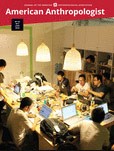
Jobson, Ryan Cecil. 2020. “The Case for Letting Anthropology Burn: Sociocultural Anthropology in 2019.” American Anthropologist 122(2): 259-271.
This essay principally meditates on the scholarship published by sociocultural anthropologists in 2019. In 2019, the field of anthropology confronted anthropogenic climate change and authoritarian governance both as objects of scholarly inquiry and as existential threats to the reproduction of the discipline. Taking the 2018 American Anthropological Association meeting in San Jose as a point of departure, this essay posits the California wildfires as an immanent challenge to anthropological practice. Pace Mike Davis, the case for letting anthropology burn entails a call to abandon its liberal suppositions. As a discourse of moral perfectibility founded in histories of settler colonialism and chattel slavery, liberal humanism and its anthropological register of ethnographic sentimentalism proved insufficient to confront the existential threats of climate catastrophe and authoritarian retrenchment in 2019. The case for letting anthropology burn is fortified by efforts to unsettle the conceptual and methodological preoccupations of the discipline in service of political projects of repatriation, repair, and abolition. By abandoning the universal liberal subject as a stable foil for a renewed project of cultural critique, the field of anthropology cannot presume a coherent human subject as its point of departure but must adopt a radical humanism as its political horizon.
Este ensayo reflexiona principalmente sobre la investigación publicada por antropólogos socioculturales en 2019. En 2019, el campo de la antropología confrontó el cambio climático antropogénico, y la gobernanza autoritaria tanto como objetos de investigación académica como amenazas existenciales a la reproducción de la disciplina. Tomando la reunión de la Asociación Americana de Antropología de 2018 en San José, como un punto de partida, este ensayo plantea los incendios forestales de California como un reto inmanente a la práctica antropológica. Contrario a la opinión de Mike Davis, el caso de dejar quemar la antropología implica una llamada a abandonar sus suposiciones liberales. Como un discurso de perfectibilidad moral fundado en historias de colonialismo de poblamiento y esclavitud tradicional, humanismo liberal y su registro antropológico de sentimentalismo etnográfico probó ser insuficiente para confrontar las amenazas existenciales de la catástrofe climática y la fortificación autoritaria en 2019. El caso para dejar que la antropología arda está fortalecido por esfuerzos para desestabilizar las preocupaciones conceptuales y metodológicas de la disciplina en servicio de los proyectos políticos de repatriación, reparación y abolición. Al abandonar el sujeto liberal universal como una envoltura estable para un proyecto renovado de crítica cultural, el campo de la antropología no puede presumir un sujeto humano coherente como su punto de partida, pero debe adoptar un humanismo radical como su horizonte político.

Dzennovska, Dace. 2020. “Emptiness: Capitalism without people in the Latvian countryside.” American Ethnologist 47(1): 10-26.
In Latvian towns and villages, post-Soviet capitalism has produced a palpable change that locals describe as “emptiness.” People point to empty houses and apartments, and they list friends and relatives who have left. They fear school closures and the cancellation of transportation routes. They imagine the future as an entirely different world, one in which they will play no part. As a social formation, emptiness consists of (1) an observable reality wherein places rapidly lose their constitutive elements (people, infrastructure, services, social networks, and the future); (2) a way of life that emerges in response to such changes, which seem irreversible; and (3) an emic interpretive framework for making sense of the new reality. Emptiness in Latvia is symptomatic of post–Cold War spatiotemporal arrangements of power wherein capital and the state increasingly abandon people and places.
Latvijas pilsētās un ciemos pēc-padomju kapitālisma radītās pārmaiņas vietējie dēvē par “tukšumu”. Ļaudis norāda uz tukšām mājām un dzīvokļiem, kā arī stāsta par draugiem un radiem, kas aizbraukuši. Viņi baidās, ka tiks aizvērtas skolas un atcelti autobusu maršruti. Daudzi iztēlojas nākotni kā pilnīgi citu pasauli, kurā viņiem nebūs vietas. Tukšums kā sociāls veidojums sastāv no: (1) novērojamas realitātes, kurā pilsētas un ciemi zaudē savus sastādošos elementus: cilvēkus, infrastruktūru, pakalpojumus, sociālos tīklus, nākotni; (2) dzīves veida, kas rodas šķietami nenovēršamu pārmaiņu rezultātā; un (3) ēmiska interpretatīva rāmja, ar kura palīdzību vietējie piešķir jēgu jaunajai realitātei. Tukšums Latvijā norāda uz pēc-Aukstā kara pārmaiņām laikā un telpā, kuru rezultātā kapitāls un valsts atkāpjas, pametot cilvēkus un vietas savā vaļā.
В городах и деревнях Латвии постсоветский капитализм привел к переменам, которые местные жители называют “пустотой”. Они показывают пустые дома и квартиры и перечисляют уехавших друзей и родственников, рассказывают о закрывшихся школах и автобусных маршрутах и описывают будущее, в котором им нет места. Пустота здесь состоит из: 1) реальности быстрoго и по всей видимости необратимого исчезновения базовых элементов жизни населенных пунктов (людей, служб, социальных сетей, образов будущего и инфраструктуры); 2) способа существования, возникающего в качестве реакции на эти перемены; и 3) эмической формы интерпретации новой реальности. Латвийская разновидность пустоты отражает пространственно-временную организацию экономической и политической власти после Холодной войны, при которой государство и капитал теряют интерес ко все большему числу людей и населенных пунктов.

Falen, Douglas J.. 2020. “Alter(native) Magic: Race and the Other in Beninese Witchcraft.” Anthropological Forum 30(4): 360-376
In Benin, as in many postcolonial settings, views of foreign ‘Others’ figure prominently in local discourses about identity and morality. Most of these characterisations centre on whites or other foreigners, known as Yovó in the Fon language of Southern Benin. While Yovós are stereotypically and disapprovingly believed to hold a distaste for African food and culture, they are praised for their production of modern technology, such as airplanes, cell phones, and the internet. These technological innovations are described by Beninese people as fantastic, even magical, and are referred to as ‘White people’s witchcraft’ (Yovó àzě), in contrast to malevolent African occult powers. The racial discourse of good and evil draws on essentialised notions of whites’ and Africans’ knowledge and power, suggesting the maintenance of colonial-era, hegemonic identities. However, formerly colonised people’s interest in foreign customs can demonstrate ambivalence, and Beninese express both pride and criticism for indigenous supernatural powers, while voicing critiques of foreign knowledge systems. Furthermore, entanglements with a powerful Other can reflect local agency, as in Beninese people’s appropriation of European and Asian spiritual traditions in order to co-opt the Other’s power – a power that enterprising healers re-interpret as foreign witchcraft to add to their supernatural arsenals. In these examples, religious borrowings are not always externally imposed examples of cultural imperialism, but rather can be the will of local actors incorporating elements from abroad into conceptualisations of themselves.

Musonda, James. 2020. “Undermining gender: women mineworkers at the rock face in a Zambian underground mine.” Anthropology Southern Africa 43(1): 32-42.
This article examines how women’s increased employment in the stereotypically masculine domain of large-scale underground mining affect gender stereotypes and cultural expectations in the Zambian Copperbelt. Based on three years of ethnographic research under and above the ground, it responds to three key questions: How are women working in mining coping with their male colleagues and the underground environment? How do women miners interact with their male partners at home? What does it tell us about broader gender dynamics in the Zambian mining sector? It also shows that women’s increased access to resources and valorised positions in mining has contributed to changing gender inequalities not only in mining but also in miners’ families. Men are no longer ashamed of having working wives as they were in the period from the 1950s to the 1970s. For these families, economic security is a more important determinant of a man’s or a woman’s position than gender difference.
Este artigo examina como o aumento do emprego de mulheres no domínio estereotipicamente masculino da mineração subterrânea em larga escala afeta os estereótipos de gênero e as expectativas culturais no cinturão do cobre zambiano. Com base em três anos de pesquisa etnográfica abaixo e acima do solo, o artigo responde a três perguntas principais: Como as mulheres que trabalham na mineração estão lidando com seus colegas homens e o ambiente subterrâneo? Como as mulheres mineiras interagem com seus parceiros homens em casa? O que isso nos diz sobre a dinâmica de gênero mais ampla no setor de mineração da Zâmbia? Também mostra que o aumento do acesso das mulheres a recursos e posições valorizadas na mineração tem contribuído para alterar desigualdades de gênero, não apenas na mineração, mas também nas famílias dos mineiros. Os homens não sentem mais vergonha de ter esposas que trabalham fora como se sentiam entre as décadas de 1950 e 1970. Para essas famílias, a segurança econômica é um determinante da posição de homens/mulheres mais importante do que a diferença de gênero.

Vázquez Palacios, Felipe Roboam. 2020. “Miradas etnográficas del envejecer en la pandemia (Ethnographic views of aging In the pandemic).” Antropología Americana 5(10): 139-162.
Uno de los objetivos de la investigación antropológica es la construcción de sentido y significado con la finalidad de hacer comprensible la realidad que se vive. Es por ello que desde la antropología se considera relevante se analice la emergencia que ha provocado el COVID-19; los cambios que devienen del confinamiento y de las distintas medidas y problemáticas que trae consigo, documentando, analizando e interpretando la transformación de los hábitos, las percepciones, las sensaciones, las interacciones, las capacidades, los conocimientos, las prácticas y las creencias para enfrentar el riesgo, así como las estrategias de adaptación a la adversidad de las personas mayores.
One of the objectives of anthropological research is the construction of sense and meaning in order to make the reality we are living understandable. That is why, from anthropology, it is considered relevant to analyze the emergency caused by COVID-19; The changes that come from confinement and from the different measures and problems that it brings, documenting, analyzing and interpreting, the transformation of habits, perceptions, sensations, interactions, capacities, knowledge, practices and threats to face risk, but also for Identify coping strategies for the elderly.

Montijano Cañellas, M. 2021. “Un juego entre la ficción y la realidad: Aproximación al arte de acción. El lugar del espectador en la performance y la responsabilidad del artista (A GAME BETWEEN FICTION AND REALITY. Approach to action art. The place of the spectator in performance art and the responsibility of the artist)”. Antropología Experimental 20: 419–427.
Este artículo tiene como objeto realizar una aproximación al concepto de verdad en la perfomance. Indagar en el juego entre ficción y realidad que se establece en el arte de acción, viendo el lugar que ocupa el espectador en la performance y el artista (el performer) en la sociedad. Contextualizando estos temas, a través de la obra de grandes artistas de la performance como Marina Abramović, Esther Ferrer, Rudolf Schwarzkogler, Bob Flanagan, VALIE EXPORT o Tania Bruguera.
The purpose of this article is to make an approach to the concept of truth in performance. To investigate the game between fiction and reality that is established in action art, looking at the place of the spectator in the performance and the artist (the performer) in society. Contextualizing these issues, through the work of great performance artists such as Marina Abramović, Esther Ferrer, Rudolf Schwarzkogler, Bob Flanagan, VALIE EXPORT or Tania Bruguera.

Bonfanti, Sara. 2020. “Shifting women: Mobilizing intimate kinship in a Punjabi diaspora domestic narrative”. ANUAC 9(1): 111-133.
Based on extensive multi-site fieldwork with Punjabi immigrants in Italy, the article discusses the institute of transnational marriage and kin reunification among Indian diasporas, interlacing the drive for upward mobility, the normative frame of family migration and the affective economy in building affinity relations. A household case is considered: the lag between a mother’s and her daughter’s experience, an Indian pioneer migrant and a 2nd generation Italian, who differently resorted to kin networks and practices of intimacy in order to circumvent contingent burdens such as political persecution, economic uncertainty, law-enforced stuckedness. The dissonant genealogical narrative that this mother-daughter dyad share sheds light on gender and age intersections in transnational migrations, revealing how a migrant life-course is embedded in family and social upheavals that unfold across different historical challenges. The role of kinship and the alternative dependencies or opportunities it may yield are gauged against a frame of structural constraints and novel desires for making one’s living in a world increasingly hostile but not impermeable to mobility.

Dias, Juliana Braz and Geovanna Belizze. 2020. “Encenando a diferença em palcos metropolitanos: as trajetórias de Sara Baartman e Franz Taibosh (Performing difference on metropolitan stages: the life courses of Sara Baartman and Franz Taibosh).” Anuário Antropológico 45(3): 304-324.
Este artigo examina os “espetáculos etnológicos” que exibiam pessoas de origem africana em palcos da Europa e dos Estados Unidos, com fins pseudoeducacionais ou para simples entretenimento. Privilegiando uma perspectiva comparativa, observamos as histórias de vida de Sara Baartman, nomeada “a Vênus Hotentote”, e Franz Taibosh, conhecido pelo nome artístico “Clicko, o bosquímano selvagem dançarino”. Suas trajetórias pessoais e suas performances nos palcos revelam processos estruturais de construção da alteridade que estão no coração dos projetos imperialistas. Argumentamos que essa noção de alteridade é composta por um conjunto amplo de marcadores sociais e hierarquias inter-relacionados.
This article considers the “ethnological shows” that exhibited people of African origin on stages in Europe and the United States, for pseudo-educational purposes or simple entertainment. Privileging a comparative perspective, we observe the life histories of Sara Baartman, named “the Hottentot Venus”, and Franz Taibosh, known by the stage name “Clicko, the wild dancing bushman”. Their personal stories and performances on stage reveal structural processes of alterity construction that are at the very heart of imperialist projects. We argue that this notion of alterity is composed of a broad set of interrelated social markers and hierarchies.

Peng, Xinyang. 2020. “The 6pm struggle: the changing meaning of work, a culture of overtime work, and corporate governmentality in urban China.” Asian Anthropology 19(1): 39-52.
Through ethnographic materials gathered from participant observation and interviewing in and beyond corporate contexts in Shanghai, this paper shows how a culture of overtime work was sustained and legitimated in urban China and how white-collar workers endured, rationalized, and accommodated it. In particular, I discuss forms of managerial control imposed on white-collar workers and social control prevalent in the workplace, to shed light on the formation of a kind of corporate governmentality in urban China and its implications for shaping the personhood of workers.
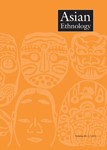
Lowthorp, Leah. 2020. “Kutiyattam, Heritage, and the Dynamics of Culture
Claiming India’s Place within a Global Paradigm Shift.” Asian Ethnology 79(1): 21-44.
UNESCO’s Intangible Cultural Heritage (ICH) program, with its emphasis on the intergenerational transmission of expressive culture, has been characterized as part of an emergent “East Asian paradigm” of heritage at the international organization. Through an examination of the cultural dynamics of Kutiyattam Sanskrit theater in both policy and practice, this article stakes a claim for India within this global heritage paradigm shift. In so doing, it suggests the possibility of a wider “pan-Asian” heritage paradigm at work, distinguished by an emphasis on the intergenerational transmission of expressive culture as well as a recognition of its continually changing nature.

Bleger, Mariel and Valentina Stella. 2020. “LA ESPERA DESOBEDIENTE: ANÁLISIS DE UN CASO ETNOGRÁFICO SOBRE UNA COMUNIDAD MAPUCHE EN BARILOCHE (RÍO NEGRO).” AVÁ 36: 43-64.
La espera como categoría de análisis ha sido pensada por distintos autores como una condición impuesta sobre los grupos subordinados por parte de organismos estatales y/o entes privados. A partir de un análisis etnográfico con una comunidad mapuche de Bariloche (Río Negro), nos interesa reflexionar en este trabajo sobre lo que sucede mientras se espera una respuesta o una solución a un conflicto territorial en particular. Al visibilizar las consecuencias y los efectos negativos que tiene la espera como control y demarcación social para esta comunidad, nos proponemos, a la par, indagar las formas en que la misma también deviene en un espacio para repensar las desigualdades y las injusticias vividas. En otras palabras, dar cuenta de los modos en que la espera se transforma en una instancia de desobediencia y desujeción de las propias condiciones impuestas de subalterización.
Waiting as a category of analysis has been thought by different authors as a condition imposed on subordinate groups by state agencies and private entities. Based on an ethnographic analysis with a Mapuche community in Bariloche (Río Negro), in this work we are interested in reflecting on what happens while awaiting a response or solution to a particular territorial conflict. By making visible the consequences and negative effects that waiting has as a control and social demarcation for this community, we propose, at the same time, to investigate the ways in which it also becomes a space to rethink the inequalities and injustices experienced. In other words, to account for the ways in which waiting becomes an instance of disobedienceand abandonment of the very conditions imposed by subalterization.

Meneses Pacheco, Lino and Gladys Gordones Rojas. 2020. “Las revistas en antropología en Venezuela: Itinerarios de una ciencia.” Boletín Antropológico 38(100): 570-603.
En la actualidad, las revistas científicas constituyen el principal medio de comunicación de los avances de la ciencia, ya que anuncian de forma periódica y continua los resultados de las investigaciones en el ámbito de las ciencias, instaurándose, gracias a los organismos evaluadores, como un instrumento de primer orden para la socialización del conocimiento científico. En el presente artículo exponemos el origen y desarrollo que han tenido en Venezuela las revistas científicas especializadas en antropología, contextualizada con los diversos procesos en la cual emergen las instituciones dedicadas a la formación e investigación antropológica en Venezuela.
At present, scientific journals are the main means of communication of advances in science, since they periodically and continuously announce the results of research in the field of science, establishing, thanks to the evaluating bodies, as a instrument of first order for the socialization of scientific knowledge. In this article we expose the origin and development that specialized scientific journals in anthropology have had in Venezuela, contextualized with the various processes in which the institutions dedicated to anthropological training and research emerge in Venezuela.
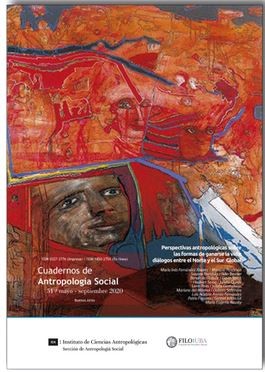
Señorans, Dolores. 2020. “Economías populares, economías plurales. Sobre la organización gremial de los trabajadores costureros en Buenos Aires, Argentina (Popular economies, plural economies. On the trade union organisation of garment workers in Buenos Aires, Argentina).” Cuadernos de Antropología Social 51: 189-206.
Este artículo se basa en una investigación etnográfica desarrollada junto con la Rama Textil del Movimiento de Trabajadores Excluidos (MTE), perteneciente a la Confederación de Trabajadores de la Economía Popular (CTEP), en el Área Metropolitana de Buenos Aires, Argentina. Buscaré mostrar que la economía popular es plural en el sentido de que mixtura y se construye a partir de relaciones usualmente consideradas “no económicas” (la familia, la pareja, los vínculos comunitarios y políticos). Analizo el modo en que esta pluralidad fue procesada para crear una forma de organización gremial que articuló el trabajo productivo con el desarrollo de formas colectivas de reproducción de la vida en un sentido amplio. Sostengo que el carácter plural como condición y potencialidad de las economías populares permite subrayar el valor de su producción cotidiana y cuestionar los prejuicios y estigmas que pesan sobre sus trabajadores.
This article is based on an ethnographic research developed together with the Textile Branch of the Movement of Excluded Workers (MTE) that belongs to the Confederation of Workers of the Popular Economy (CTEP), in the Metropolitan Area of Buenos Aires, Argentina. I show that the popular economy is plural in the sense that it assembles and builds on relationships usually considered "non economical" (family, couple, community and political ties). I analyse how this plurality was processed to create a form of trade union organisation that articulated productive work with the development of collective forms for the reproduction of life. I argue that the popular economies’ plural character as a condition and potential allows to emphasize the value of its everyday production and to call into question the preconceptions and stigmas associated to its workers.
Este artigo baseia-se numa investigação etnográfica desenvolvida junto ao Ramo Têxtil do Movimento de Trabalhadores Excluídos (MTE), pertencente à Confederação de Trabalhadores da Economia Popular (CTEP), na Área Metropolitana de Buenos Aires, Argentina. Tento mostrar que a economia popular é plural no sentido de que mistura e se constrói a partir de relações geralmente consideradas “não econômicas” (a família, o casal, os vínculos comunitários e políticos). Quero analisar o modo em como esta pluralidade foi processada para criar uma forma de organização sindical que articulou o trabalho produtivo com o desenvolvimento de formas coletivas de reprodução da vida em sentido amplo. Sustento que o caráter plural como condição e potencialidade das economias populares permite sublinhar o valor da sua produção cotidiana desafiando os preconceitos e estigmas que pesam sobre os seus trabalhadores.

Bize, Amiel. 2020. “THE RIGHT TO THE REMAINDER: Gleaning in the Fuel Economies of East Africa’s Northern Corridor.” Cultural Anthropology 35 (3):462–486.
This article argues for the importance of the remainder as a key concept in economic transactions at the edges of liberalized market economies. It tracks the East African roadside trade in siphoned fuel, where lorry drivers sell “leftover” fuel to dealers who then resell it to rural hinterlands. Rather than seeing this exchange as illicit, drivers and dealers viewed themselves as legitimately trading residual bits of a commodity. They constructed their right to sell fuel, and their understanding of profit, around the idea of the remainder, rather than around concepts of income, price, or even usefulness. Here, I analyze the remainder as a widely recognized concept of valuation. Drawing on accounts of the practice of gleaning (an ancient ethic of redistribution organized around harvest leftovers) and examining in detail the calculative practices and metaphors used both by drivers and fuel dealers, I demonstrate the centrality of the remainder to popular economies in East Africa today. Roadside exchanges, I argue, reveal established practices of distribution and entitlement that both practically and conceptually challenge liberal common sense around smooth flow, equal exchange, and price-based markets.
Nakala hii inaangazia salio au baki kama moja ya dhana msingi katika uchumi za pembeni mwa soko huria. Hususan inaangazia soko la mafuta ya kufyonzwa. Uchumi huu unatekelezwa kando ya barabara kuu za Afrika ya Mashariki. Unahusisha madereva wa lori za masafa marefu kuuza mafuta ‚yaliyobakia‘ kwa wafanyabiashara ambao nao huyachuuza mapembezoni. Madereva na wafanyabiashara hawa hukana uharamu wa kazi hii na kuitambua kama biashara halali ya mabaki. Wahusika hawa hueleza haki yao ya kuuza mafuta haya kwa kupitia dhana ya salio. Hawatumii dhana maarufu kama mapato, bei au hata manufaa. Hapa, ninachambua salio kama mbinu mbadala ya kufumbua swala la thamani. Ninaandika nikifuatilia masimulizi ya kitendo cha kubuga (utaratibu wa kale wa usambazaji mali uliohimiza matajiri kubakisha masazo baada ya mavuno kwa manufaa ya wasiojiweza). Ninanuia kukagua kwa undani istiari za kibiashara pamoja na taratibu za kukokotoa zinazotumiwa na wanaoendeleza biashara hii. Kwa njia hii, ninakusudia kufafanua umuhimu wa salio katika shughuli za uchumi usio rasmi. Napendekeza kuwa biashara ya kando ya barabara hubainisha desturi mbadala za usambazaji wa mali pamoja na mbinu bunifu za kuwasilisha madai ya kimali. Kama dhana na pia kwa matumizi ya kila siku, desturi hizi zinakaidi matarajio ya itikadi ya soko huria, kwa mfano mtiririko huru wa utajiri, mabadilishano sawia, na masoko yanayozingatia bei kwa utambuzi wa thamani.

Schmelter, Susanne. 2020. “Migration Struggles along the Humanitarian Border: Syrian Displacement in Lebanon and Ways to Travel to Europe.” Ethnologia Europaea 50(2): 91-108.
This article explores migration struggles along Europe’s humanitarian border in the context of Syrian displacement in Lebanon. Based on ethnographic field research it traces how humanitarian government is negotiated, appropriated and resisted in the daily struggles of individuals seeking to leave the region towards Europe. In this respect it sheds light on Syrian activism in Lebanon’s humanitarian sector, strategies to get a place in a humanitarian admission programme, projects to leave the country towards Europe and decisions to stay in Lebanon. The article shows how the arbitrariness of humanitarian government is not limited to institutions or campsites but penetrates as a ruling logic the everyday of social life and contributes to zones where access to human rights is not a given, but a daily struggle.

Hojman, Andrea Silvina. 2020. “ Un territorio querandí entre urbanizaciones privadas. Moralidades en pugna en la localidad de Punta Canal (Partido de Tigre-Provincia de Buenos Aires, 2010-2015) (A Querandi territory amidst private urbanizations. Moralities at conflict in the locality of Punta Canal (Partido de Tigre, Province of Buenos Aires, 2010-2015)).” Etnografías Contemporáneas 6(10): 8-37.
Desde 2010 dos grupos contiguos físicamente protagonizan un conflicto en la localidad de Punta Canal (Partido de Tigre, Provincia de Buenos Aires): la empresa desarrolladora de urbanizaciones privadas Eidico y un colectivo de identificaciones aborígenes, nacido con el nombre de Movimiento en Defensa de la Pacha. El artículo busca reconstruir analíticamente los repertorios morales más relevantes de ambos grupos sociales, a fin de comprender tanto sus respectivas lógicas identitarias como los motivos de su disputa. Durante un trabajo de campo realizado entre 2012 y 2015, he podido registrar y analizar los valores morales de estos grupos, que se han visto articulados en sus narrativas de origen, simbolizados en múltiples representaciones, objetivados en sus configuraciones del espacio y los cuerpos, ritualizados en modos de habitar, transitar, celebrar, protestar y defenderse. En sus formas de apropiación y movilización se han mostrado flexibles, en tanto han podido ser ampliados y reinterpretados. Pero a la vez, estas dinámicas se han visto restringidas por ciertos criterios de habilitación y aprobación social.
Since 2010, two groups located in Punta Canal (Tigre, Province of Buenos Aires) have been involved in a conflict: an entreprise developer of private urbanizations (EIDICO)and a group of self-identified aboriginals, named of Movimiento en Defensa de la Pacha. The article seeks to reconstruct analytically the most relevant moral repertoires of both social groups, in order to understand their logics of identity and the reasons for their conflict. During fieldwork carried out between 2012 and 2015, I registered and analyzed these groups’s values, that have been articulated in their origin narratives, symbolized in several representations, objectified in time and space settings, ritualized in ways of living, traveling, celebrating, protesting and defending themselves. Such moral values, in their forms of appropriation and mobilization, have been flexible, and have been expanded and reinterpreted. But, at the same time, these dynamics have been restricted by certain criteria of empowerment and social approval.

Chao, Sophie. 2020. “A tree of many lives: Vegetal teleontologies in West Papua.” Hau 10(2): 514-529.
In this article, I analyze the ontology of the African oil palm among indigenous Marind communities in Merauke, West Papua. This introduced cash crop is conceptualized by Marind as tree and person, assailant and victim, and stranger and kin. Its ontology further multiplies through its material manifestations as plant, part, and product—from an individual stand to monocrop plantation, and from seedling to packaged oil. Drawing from two ethnographic accounts of negotiations between Marind and state and corporate actors, I then examine how Marind strategically foreground or background different facets of oil palm’s reality to serve the political ends of their activism, producing what I call “teleontologies,” or ontologies that serve an instrumental purpose. Essentializing the reality of oil palm is deemed necessary by many Marind for indigenous activism to succeed. But such essentializations are also deeply contested and can backfire unintentionally on the indigenous activists who deploy them.
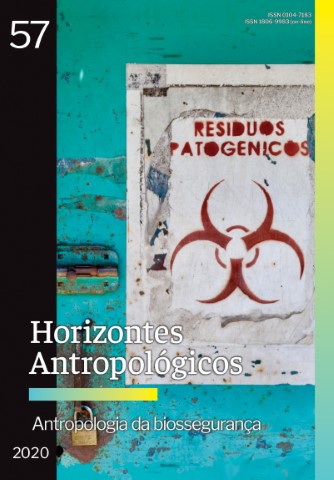
Segata, Jean and Andrea Mastrangelo. 2020. “As biosseguranças e suas antropologias (Biosecurities and their anthropologies).” Horizontes Antropológicos 26(57): 7-25.
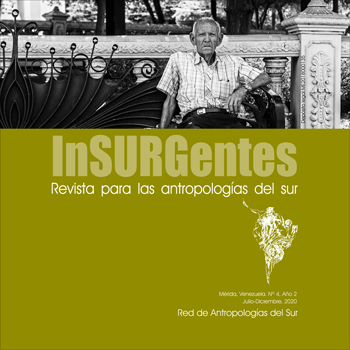
González Ñáñez, Omar. 2020. “Las antropologías del sur y la postmodernidad en América Latina: resistencia y ruptura contra el colonialismo europeo en la Orinoquia venezolana (The anthropologies of the south and the postmodernity in Latin America: resistance and rupture against the european colonialism in the venezuelan Orinoquia)”. InSURGentes. Revista para las antropologías del sur 4(2) 59-80.
Resulta importante, a nuestro juicio, destacar algunos episodios olvidados de la historia propia indígena que demuestran algunos estrategias de resistencia de estos pueblos de la Orinoquia durante la época del colonialismo europeo a finales del siglo XVIII. Estos episodios se basan fundamentalmente en relatos de la tradición oral y la práctica religiosa y política de los pueblos Maipure-arawakos de esa región en su afán por oponerse a la asimilación del conquistador y/o del patrón criollo explotador (bien sean misioneros, caucheros, mineros, comerciantes en general). Estas tradiciones milenarias continúan cumpliendo una función restituidora y actualizadora de la identidad etnocultural de esas sociedades indígenas.
It is important, in our opinion, to highlight some forgotten episodes of indigenous history that demonstrate some strategies of resistance of these people of the Orinoquia during the time of European colonialism in the late eighteenth century. These episodes are based mainly on accounts of the oral tradition and the religious and political practice of the Maipure-Arawakos peoples of that region in their eagerness to oppose the assimilation of the conquistador and / or the exploitative Creole patron (whether missionaries, Miners, merchants in general). These millenary traditions continue to fulfill a restorative and updating function of the ethnocultural identity of these indigenous societies.

Zhang, Jijiao. 2020. “A New Round of Industrialization, Marketization and Urbanization on the Perspective of Enterprise Anthropology.” International Journal of Business Anthropology 10(2): 15-27.
An American anthropologist suggested that urbanization and industrialization are not the research fields of anthropology. However, Fei Xiaotong, a well-known Chinese anthropologist explored China’s rural industrialization and marketization around 75 years ago. He also studied China’s urbanization more than 30 years ago. That was the true representation of China’s academic tradition of research on industrialization, marketization and urbanization. Currently, a new round of industrialization, marketization and urbanization give renewed impetus to a series of huge economic and social transformations in China’s underdeveloped central and western regions: from the planned economy to the market economy, from agriculture and animal husbandry to industry and commerce, from a rural society to an urban society, among others. These are all significant and practical issues ahead for Chinese anthropology and ethnology, which is focus of this paper.

Steiner, George F.. 2020. “Exceptions to the rule? Ethnographic alternatives to cumulative cultural evolution.” International Journal of Modern Anthropology 2(14): 177-235.
In suggesting that the rules that govern the evolution of cumulative culture are observed in all modern societies, gene-culture coevolution theory implies that the biases that affect the successful ‘ratcheting’ and efficient transmission of innovations are cross-cultural universals. In the modeling of the theory the stress is placed on demographic strength, the absence of which would render small and isolated populations vulnerable to the ‘treadmill effect’, the inevitable consequence of impaired social learning. However, the ethnographic literature documents small groups of isolated hunters and gatherers who have devised intricate risk-reduction networks that do not necessarily proliferate technological innovations and function only in low demographic settings. Moreover, with merit and abilities being equally distributed, the model-based and conformist biases that influence social learning in gene-culture coevolution theory become irrelevant and elaborate ‘leveling mechanisms’ inhibit the acquisition of status and prestige. As a result, no cultural models can rise to prominence and sway the trajectory of cultural change. Contrary to the predictions of the theory, these societies do not seem to be plagued by cultural loss and, instead of hopelessly running the treadmill and living in poverty, they have developed egalitarian and, to an extent, ‘affluent’ societies. The model forwarded in this paper resolves this apparent paradox by enrolling the hypothesis of ‘cultural neoteny’. It is contended that egalitarian societies – despite their simple (immediate-return) mode of subsistence – are not the vestiges of an ancestral/universal stage from which more complex (delayed-return) economies would linearly evolve, but a relatively recent and idiosyncratic achievement through ‘subtractive cultural evolution’.

金子 亜美 (Ami Kaneko). 2020. “キリスト教化と言語:南米チキトス地方のイエズス会布教区におけるジェンダー指標の用法から (Christianization and Language: A Linguistic Anthropological Analysis on Gender Indexicality in the Jesuit Missions of Chiquitos, South America).” 文化人類学 (Japanese Journal of Cultural Anthropology) 82(4): 503-521.
本論文は、キリスト教化における言語の役割、およびそれが地域社会の言語使用にもたらす影響を扱うものである。17-18世紀のイエズス会布教区における南米先住民のキリスト教化を取り上げ、宣教活動を通じて在来の言語使用に生じた変容と、その長期的な帰結を考察することを目的とする。第Ⅰ章では、指標性およびメタ語用に関する言語人類学の理論的観点を導入し、宣教活動を、言語における社会指標的意味の変容を通じて「キリスト教徒」なる人々を作り出そうとする試みとしてとらえ直す。第Ⅱ章では、事例として扱うチキトス地方のイエズス会布教区の歴史と先行研究について述べる。第Ⅲ章では、先住民言語チキタノ語に存在する「ジェンダー指標」の概要を確認した上で、その指標対象がイエズス会宣教師のメタ語用的モデルを通じて再編されていったことを論じる。第Ⅳ章では、今日チキタノ語が用いられる「説教」と「歌」を事例に、そこにおけるジェンダー指標の異なる用法が、発話自体をそれぞれ異なる二つの「キリスト教的」なものとして指標的に創出していることを示す。第Ⅴ章では議論をまとめ、キリスト教化を経た地域社会を民族誌的に考察する上で社会指標的意味を担う記号やメタ語用に着目することがもつ意義を述べる。
This paper addresses the role of language in missionary activities and their impact on local societies in the aftermath of Christianization. In the first section, articulating linguistic anthropological perspectives on indexicality and metapragmatics, I reframe missionary activities as attempts to implant certain patterns of language use considered to embody Christianity among non-Christian people, which often result in changes in local verbal behaviors. The second section introduces the ethnographic outline of the case study: Christianization of the indigenous population in the South American Jesuit missions during 17-18th centuries. The third section details the "genderlect" of native Chiquito language, which consists of male and female varieties, and explains how the Jesuits metapragmatically conceptualized and differentiated their usages in missionary activities. The fourth section discusses the consequences of the aforementioned transformation of indexical meanings of genderlect, with a particular focus on two different contemporary speeches in Chiquito language: sermón and canto. I demonstrate how the difference in the uses of varieties in sermón and canto reflexively indexes the "Christian" nature of each speech.

White, Frances J., Colin M. Brand, Alexana J. Hickmott and India R. Minton. 2020. “Sex differences in bonobo (Pan paniscus) terrestriality: implications for human evolution.” Journal of Anthropological Sciences 98: 5-14.
Recent finds in hominin fossil environments place the transition to terrestriality in a wooded or forested habitat. Therefore, forest-dwelling apes can aid in understanding this important evolutionary transition. Sex differences in ape locomotion have been previously attributed to sexual dimorphism or ecological niche differences between males and females. This study examined the hypothesis that differential advantages of terrestrial travel may impact mating success in male bonobos. We examined whether males are more terrestrial when there are mating benefits for fast travel. We analyzed behavioral data on wild bonobos over a ten-month period in the Lomako Forest, DRC and examined the proportion of time spent at lower heights compared to higher heights between adult females and males relative to their location to feeding contexts with high mating frequencies. We found a significant interaction between sex and height class away from food patches (F=4.65, df = 1, p < 0.05) such that females were primarily arboreal whereas there was no difference between males across height classes. However, there was also a significant interaction between sex and height class (F = 29.35, df = 1, p < 0.0001) for adults traveling near or entering a food patch. Males often arrived at food patches terrestrially and females arrived almost exclusively arboreally. We found a significant difference between the expected and observed distribution of matings by food patch context (G = 114.36, df = 4, p < 0.0001) such that most mating occurred near or in a food patch. These results suggest that males may travel terrestrially to arrive at food patches before cohesive parties of females arrive arboreally, in order to compete with other males for mating access to these females. Such intrasexual selection for sex differences in locomotion may be important in considerations of the evolution of locomotion strategies in hominins in a forested environment.

趙恩潔 (Chao, En-chieh ). 2020. "蛻變的豬與死屍:印尼清真驗證科學化與本體論轉向再反思 (Ontologies of Food Taboos: The Evolving Pork and Carcass in the Scientification of Halal Authentication in Indonesia)." 考古人類學刊 (Journal of Archaeology and Anthropology) 92: 31-70.
人類學者 Mary Douglas 之經典著作 Purity and Danger(1996[1966])透過象徵分析指出在猶太律法中,因為豬無法同時符合「偶蹄類」與「反芻」的分類秩序,因而成為「範疇之外」的不潔食物。這個觀點本質上是靜態與單一的,無法說明構成儀式禁忌的豬與其他禁忌物如何經歷變遷,更無法說明禁忌物質如何以多重本體存在。本文將以印尼清真驗證科學化的發展為例,說明豬與死屍如何進入變遷的社會文化過程,透過不同的宗教知識、科學知識與實驗科技的實作而以多重真實存在。在此,「清真」並非僅是一種靜態的世界觀分類之既有觀念,而是一種在不同的人群、非人與物質狀態的動態連結與多重權威與利益的競合後所產生的存在狀態。換言之,儀式污染物的變遷不僅具有認識論上的意義,更有本體論上的意涵。同時,本文也反思行動者網絡理論之本體論,指出本體論轉向的政治有需要重新將混雜的權力關係與歷史建構過程拉回,以適切地回應「本體只是文化換個稱法、本體論誇大差異並忽視現實鬥爭」等嚴肅的指控。
In her masterpiece, Purity and Danger, Mary Douglas famously concludes that pork is prohibited and considered unclean because pigs do not fit the animal category of having cloven hooves and chewing the cud. Ritually prohibited things are unclean because they are outside of cultural classification. While maintaining its analytical value, this theory nonetheless treats a dietary code as a static and singular system, and hence is unable to aid much to reveal the ways in which forbidden things can change their modes of existence over time, and even exist with multiple ontologies. This essay tackles the question of multiple ontologies that pork and carcass entail in the scientification of halal authentication in Indonesia. In this changing socio-cultural process, what it means to be halal is a result of webs of interaction, in which multiple authorities, economic interests and animal corporeality negotiate to compete or collaborate. In this sense, a deeper understanding of ritually prohibited things involves an ontological investigation beyond the traditional epistemological question. Meanwhile, this article contributes to the debate of the ontological turn by arguing that ontological inquiries need to bring power relation and socio-historical construction back in, so that we can properly respond to the unresolved accusation that “ontology is just another word for culture, and ontology neglects realpolitik.”

Jónsdóttir, Dagrún Ósk.2020. ““Obey My Will or Suffer”: Violence against Women in Icelandic Folk Legends.” Journal of Ethnology and Folkloristics 14 (2): 17–43.
This article will look at how domestic and sexual violence against women is presented in the Icelandic folk legend collections from the 19th and early 20th centuries. Gender-based violence is a subject relatively absent in Icelandic legend collections which were mostly told, collected and published by men (the exception being the collection of Torfhildur Þorsteinssdóttir Hólm). Violence plays a role in the subordination of women, and there is good reason to consider how violence against women is portrayed in the oral legends of the past. I will among other things consider the effect these particular legends might have had on those who heard them and examine the roles of the legends in maintaining and shaping a discourse which in many cases may well have attempted to normalise this violence.
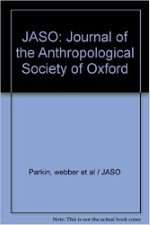
Peng, Yuxin. 2020. “Spatial changes in an Oxford public asylum.” Journal of the Anthropological Society of Oxford Online 7(2): 200-223.
This article examines spatial changes at Littlemore hospital in Oxford between 1846 and 1956, the period since its foundation as a Victorian public asylum to the very last years before a radical psychiatric reform was implemented. I propose to see the asylum and later hospital spaces of Littlemore as being bodily sensed and co-productive with social processes. Specifically, I discuss the entanglement of these spaces with three factors: (panoptical) control, considerations of cost, and residents’ comfort. With emphases on residents’ bodily well-being and experiences, I aim to present a dynamic account of this part of the history of institutionalized mental health.

Negi, Sarika. 2020. “Homelessness, Contestations and Subjectivities.” Journal of the Indian Anthropological Society 55: 238-258.
The publications by the Census of India in 1991, 2001 and 2011 showed an increment in the population of homeless in India, including Delhi. This paper seeks to bring forth the causalities behind homelessness with special reference a group of populations, who were living under a flyover in the open and two institutional spaces in Delhi. The paper further seeks to understand how locating identity, nature of the population, and duration of stay add to the subjectivity in understanding and formulating approaches towards homelessness.
This study utilised a mixed-method approach. Data were collected from 108 households, including 22 single-person households, concentrated in two clusters. An overwhelming majority of the participants of these households migrated (98.1%) to urban streets or open spaces and shelter services to resolve their life situation. Data were collected through ethnographic method, interview schedule, and genealogy method. The result revealed that the phenomena of homelessness include an adaptive process for many in the study population. The findings also call for broadening up of the understanding of homelessness within a policy framework. The research also highlights the need to explore homelessness from a caste perspective at a larger level and to extend it further to a domain of intersection of caste, poverty, and homelessness.

Kim, Heekyoung. 2020. “Place and Placelessness of Old Age: The Politics of Aging in Place in Rural Japan.” Korean Anthropology Review: A Journal of Korean Anthropology in Translation 4: 149–174. Translated by Bonnie Tilland.
In this study, I investigate the ways that different concepts and senses of place in rural Japan collide during the process of applying the “Aging in Place” (AIP) philosophy by diverse actors, including the central government, regional governments, civic groups, NPOs, the elderly and their neighbors, which paradoxically results in the elderly, who are the targets of the policies, becoming alienated. First, the study analyzes in depth the experiences of place and placelessness of the elderly in local communities, examining how the elderly’s sense of place is changing. Second, the study critically observes the gap between the places the central and regional governments offer and the elderly’s sense of place. Third, the study discusses the attempts at and limitations to the offering of alternative places by old people’s cooperative unions and volunteer groups. The study critically observes the political and economic context for placelessness and stresses the importance of suitable and practical alternatives, given the elderly’s changing sense of place, in order to implement AIP successfully.

하대청 (Dae–Cheong Ha). 2020. “수요의 발명와 기술적 명령: 생존기증자 장기이식의 생명정치 (Invention of Demand and Technological Imperative: Biopolitics of Living Donor Organ Transplantation).” 한국문화인류학 (Korean Cultural Anthropology) 53(2): 213-246.
한국은 뇌사 장기 기증율은 낮지만 살아 있는 이들의 기증율은 매우 높은 국가이다. 대개 종교적 문화 때문에 뇌사자의 기증이 적고 이 때문에 살아 있는 이들이 자신의 장기를 기증 하는 생존기증자 장기이식이 활성화되어 있다고 알려져 있다. 이 글은 “수요”와 “공급”이 불 균형한 장기이식의 익숙한 현실을 생명정치적 관점에서 다시 조명하려는 시도이다. 특히, 장기이식의 “수요”는 자연적인 것으로 간주하고 “공급”을 확대하는 기증활성화 운동이 장 려되는 현실에서 이 “수요”가 어떻게 만들어지는지 살펴보고자 한다. 장기이식이 필요한 환 자는 어떻게 정해지는가? 누가 어떤 기준으로 이식대상자로 정의하는가? 이 과정에서 어떤 사회적·경제적 힘들이 작동하는가? 이 연구는 실험적 처치였던 장기이식이 표준치료로 인 정되는 과정에 주목하면서 장기의 “수요”는 질병 발생의 자연스런 결과이기보다는 의료적 실천을 둘러싼 생명정치의 결과라는 점을 보이고자 한다. 지난 연구에서 필자는 ‘효의 생의 료화’라는 문화적 각본이 강력하게 작동하면서 기증자들의 고통받는 몸이 비가시화된다는 점을 보였다. 이 과정 덕분에 기증자의 몸을 자원으로 만들려는 ‘생명가용성(bioavailability)’ 전략이 끝없이 확장될 수 있었다. 이번 연구에서는 기증자의 몸을 추적하는 대신 의료진, 사 회복지사와 수혜자 등을 면담하고 수혜자의 자격을 결정하는 의료지식의 생산과 실행 과정 을 구체적으로 들여다볼 것이다. 그 결과, 환자의 희망, 가족의 요구, 적응증(indications)을 확 대하려는 의료진의 노력, 지식의 비대칭적 생산과 특정한 생명경제(bioeconomy) 아래에서 장기이식 대상자의 범주가 꾸준히 확대되는 현실을 확인할 수 있었다. 생존기증자를 가족 중에서 쉽게 찾을 수 있는 국내 현실 속에서 표준치료와 실험적 치료의 경계가 재구획되고 ‘연명용’ 장기이식과 ‘선제적 조치’로서의 장기이식이 마치 표준치료인 것처럼 도입되고 있 었다. 또한, 의료의 공정한 접근가능성을 보장하려는 건강보험과 의료비 지원제도가 병원의 이해관계와 결합하면서 이식 결정의 경제적 장애물을 제거하고 있었다. 장기이식이 열어놓 은 기술적 가능성 속에서 이 가능성을 루틴한 시도로 받아들이는 환자와 가족, 이를 정당화 하려는 의료진, 의료의 접근성을 높이려는 정부 정책이 병원의 이해관계와 결합된 현실 등 이 모두 결코 충족될 수 없는 장기이식의 수요를 제한 없이 발명하는 결과를 낳고 있다. 마 지막으로 이 연구는 지식–윤리–기술–제도가 결합한 생명정치의 한 양상을 드러내면서 이 결과가 갖는 윤리적 의미를 논의한다.
Living organ donation rate is predominantly high in South Korea, with low deceased donation rate. The high living donor rate with low deceased one has often been ascribed to our own religious beliefs and cultural attitude. This paper reexamines the well–known imbalance between “supply” and “demand” in organ transplantation, drawing on a theory of biopolitics. Especially, I will investigate how the demand has been made, rather than naturalizing and trying to meet the demand in organ transplantation. I will problematize the demand and narratives around it by raising several questions; Who should receive organ transplants? By whom and what criteria is it determined? what does socio–economic force intervene in this process? This paper will show that the demands in organ transplantation are outcomes of biopolitical enterprise in medical practices,exploring how a living donor liver transplantation has been accepted as a standard treatment. My previous research showed that a moral script such as “biomedication of Hyo” has made donors’ suffering socially invisible, which serves as a base for biopolitics to expand the availability of human bodies for transplant. In this paepr, while interviewing diverse actors such as medical doctors, social workers and donors, I will investigate how the indications for living donor liver transplantation(LDLT) have been expanded in the medical practices. The result shows that requests of patients and family, medical staff’s effort to expand the indications, asymmetric knowledge production and a specific bioeconomy, all contributed to the audacious expansion for eligible organ recipients. In this manner, a boundary between standard and experimental treatment has been redrawn and contentious organ transplantations, that is, ones for life–prolongation and preventive measures have been actively introduced.In addition,health insurance provided by the state,and medical expenses supported by public charities, conjugated with hospitals’ interests, staved off the last obstacle for the expansion.This paper finally discusses the implication of this biopolitical enterprise and a possible role of anthropology in interveining in this biopolitics.

Zani, Alejandra M.. 2020. “Recuperando el espacio público. La resistencia feminista en la ‘Primavera Árabe’: precariedad y desobediencia creativa en las calles de El Cairo.” Kula. Antropología y Ciencias Sociales 23: 23-40.
El presente trabajo realiza una aproximación teórica al estudio del graffiti como estrategia de apropiación, resistencia y disputa por parte de las mujeres egipcias en el espacio público tras los levantamientos de 2011. La temática es abordada mediante las categorías de ‘desobediencia creativa’ (Badran, 2016) y de ‘precariedad’ (Butler, 2009; Lorey, 2016). Estas nociones permiten pensar la reapropiación del espacio público por parte de las mujeres egipcias durante la revolución como un movimiento con dos caras: por un lado, visibilizando la precariedad de las mujeres, marginadas por el sistema patriarcal árabe que históricamente las relegó hacia la inteligibilidad en los espacios públicos, pero que tras 2011 se construyeron como sujetos amenazantes para el orden; por otro lado, visibilizando la precariedad constitutiva de ese mismo sistema patriarcal que dejó al descubierto su fragilidad al recurrir la represión para reproducir sus condiciones de subordinación de género.
This paper ponders on the study of graffiti as a strategy of appropriation, resistance and dispute by Egyptian women in public spaces after the uprisings of 2011. The study focuses on two categories: ‘Creative Disobedience’ (Badran, 2016) and ‘Precarity’ (Butler, 2009; Lorey, 2016). These notions allow us to think of the reappropriation of public space by Egyptian women during the revolution as a movement with two sides: on the one hand, making women’s precarious life visible, and showing how they were marginalized by the Arabic’s patriarchal system that historically relegated them to intelligibility in public spaces, but who after 2011 were built as threatening subjects for order; on the other hand, making the constitutive precarity of that same patriarchal system visible, and illustrating how it revealed its fragility by resorting to repression to reproduce its conditions of gender subordination.
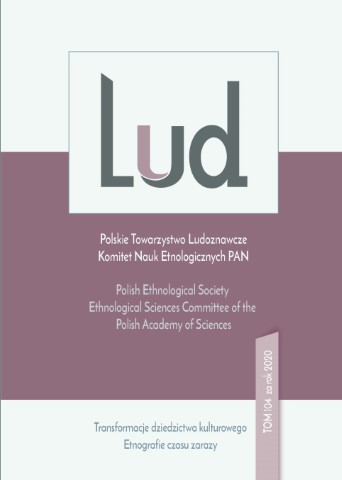
Jóźwiak, Ignacy, Elżbieta Mirga-Wójtowicz, Sonia Styrkacz and Monika Szewczyk. 2020. “Stay calm and beshen khere. Internet i transnarodowa intensyfikacja życia polskich Romów w czasie pandemii COVID-19 (Keep calm and beshen khere. Internet and transnational intensification of life among Polish Roma under the COVID-19 pandemic)”. Lud 104: 235–257.
Artykuł podejmuje, nieobecną do tej pory w polskich badaniach romologicznych, tematykę internetowych (rodzinnych i towarzyskich) praktyk polskich Romów. Głównego kontekstu dostarcza pandemia koronawirusa (Covid-19) i towarzyszący jej stan zamknięcia (lockdown) i konieczność zachowania tzw. dystansu społecznego w okresie od połowy marca do końca kwietnia 2020 roku. Badania przeprowadzone zostały online wśród polskich Romów w Polsce i zagranicą. Internet stanowi dla nas źródło informacji oraz możliwość kontaktu z uczestnikami badania. Wskazujemy tym samym na specyfikę „romskiego internetu” zarówno przed pandemią, jak i w jej trakcie. W tym obszarze zwracamy uwagę na zjawisko „wpasowowania się” internetu w kulturę romską i związane z nią prawo zwyczajowe. Na tym gruncie wprowadzamy pojęcie e-romanipen oznaczające przeniesienie kultury romskiej i w przestrzeń online. Internetową aktywność w czasie pandemii interpretujemy jako przejaw kolektywnej sprawczości i kreatywności w działaniach na rzecz spójności grupy w sytuacji zagrożenia.
The article focuses on online social practices of the Polish Roma. The main context is provided by the COVID-19 epidemic accompanied by a period of lockdown from mid-March to the end of April 2020 and the necessity of social distancing. The research was conducted using online social interactions among the Polish Roma in Poland and their kin living abroad. As such, the internet functions as a source of information and opportunity to maintain social relations between the research participants. We point to the specifics of the Roma-generated online content before and after the pandemic. In this respect, we emphasize the way Roma culture and norms of common law “fit into” the Internet. It is on this ground that we introduce the concept of e-romanipen which describes the online shift in Roma culture. We interpret the intensification of online activity under the COVID-19 pandemic as an expression of collective agency and creativity aimed at cultural reproduction and maintenance of group cohesion at the time of threat and existential insecurity.
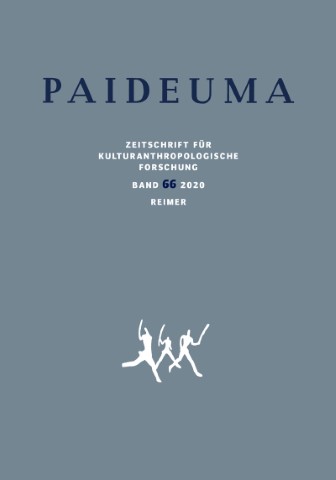
Pöhlmann, Tim. 2020. “Ein erwünschter Staat? Dezentralisierung im urbanen Java als Staatsbildung „von unten.” Paideuma 66: 101-126.
This article contributes to the anthropology of the state by inquiring into the peculiarities of local state-formation in urban Java, Indonesia. Here, since Indonesia underwent aradical macrostructural process of decentralization, neighbourhood residents have been facedwith a changed modality of state power. Grappling with the multifarious ramifications of decentralization, this paper offers a reconsideration of two theorists who assist in understandingstate-society entanglements: Michel Foucault (1991), who conceptualizes expanding modes of the‘art of government’; and James C. Scott (2009), who emphasizes entirely different situations characterized by ‘the art of not being governed’. My argument centres around an observation aliento both schemes, namely that certain local actors actively seek, emulate, shape and incorporatedesirable elements of the state. They are thus neither tricked by Foucauldian techniques of governmentality, nor do they repel the state altogether and artfully resist its machinations. Hence,this contribution draws attention to the significance and formative involvement of local non-stateactors in large-scale transformations, as well as challenging theoretical approaches that cannotaccount for the imbrication of civilians into the continuous reproduction of ‘the state
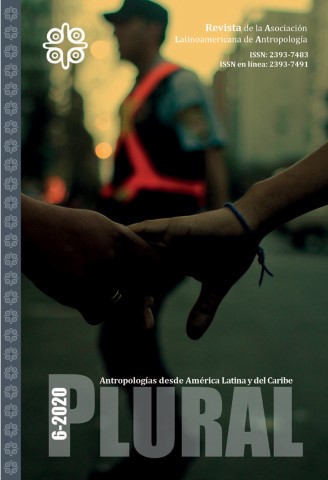
Igreja, Rebecca Lemos and Camilo Negri. 2020. “As ciências sociais brasileiras frente à ascensão da extrema-direita: uma reflexão urgente e necessária.” Plural. Antropologías desde América Latina y del Caribe 2(6): 35-69.
A análise desse artigo, escrito por uma antropóloga e um sociólogo político, tem o intuito de propor reflexões e questionamentos a respeito da ascensão da extrema-direita no mundo, como fundamento de pesquisa. Fazemos uma revisão teórica de abordagens das ciências sociais sobre o tema. Logo, discutimos os desafios colocados pelo alcance das tendências globais nas conjunturas locais e a inserção de discursos da questão étnica e cultural no contexto do crescimento da extrema-direita. Em seguida, analisando o contexto brasileiro, buscamos identificar nos discursos e redes sociais da nova extrema-direita no Brasil, personificada no presidente Jair Messias Bolsonaro, categorias, conceitos e léxicos que ela assume. Nessa disputa por novas interpretações sobre a sociedade, as ciências sociais tornam-se alvo, atacadas e deslegitimadas.
A análise desse artigo, escrito por uma antropóloga e um sociólogo político, tem o intuito de propor reflexões e questionamentos a respeito da ascensão da extrema-direita no mundo, como fundamento de pesquisa. Fazemos uma revisão teórica de abordagens das ciências sociais sobre o tema. Logo, discutimos os desafios colocados pelo alcance das tendências globais nas conjunturas locais e a inserção de discursos da questão étnica e cultural no contexto do crescimento da extrema-direita. Em seguida, analisando o contexto brasileiro, buscamos identificar nos discursos e redes sociais da nova extrema-direita no Brasil, personificada no presidente Jair Messias Bolsonaro, categorias, conceitos e léxicos que ela assume. Nessa disputa por novas interpretações sobre a sociedade, as ciências sociais tornam-se alvo, atacadas e deslegitimadas.

Manzano, Virginia. 2020. “La criminalización de la vida política popular: dimensiones éticas y epistemológicas de una pericia antropológica en el caso de la organización barrial Tupac Amaru (The criminalization of popular political life: ethical and epistemological dimensions of an anthropological expertise in the case of the Tupac Amaru neighborhood organization).“ Publicar en Antropología y Ciencias Sociales 29: 14-25.
Este artículo analiza la construcción de una pericia antropológica en un caso judicial que involucra a militantes de la Organización Barrial Tupac Amaru en la provincia argentina de Mendoza. Se considera el proceso de criminalización de movimientos sociales, en tanto el Estado actúa sobre el conflicto social a través del poder judicial para tipificar como delitos a distintas prácticas de la vida social y política de los sectores populares. Se discute el problema de traducción del conocimiento antropológico a los textos legales, considerando asuntos éticos, como la simplificación de la dinámica política popular. Además, se abordan aspectos epistemológicos como la imposición del dominio de la evidencia positivista de la esfera judicial sobre otras formas de validación de conocimiento características de la etnografía y de la antropología en colaboración con movimientos sociales.
This article analyzes the construction of a expertise report in a judiciary case involving members of the Tupac Amaru Neighborhood Organization in the argentine province of Mendoza. The process of criminalization of social movements is considered, pointing out how the State acts on the social conflict through the judiciary to criminalize different practices in the social and political life of the popular sectors. The problem of translation of anthropological knowledge into legal texts is discussed, considering ethical issues, such as the simplification of popular political dynamics. In addition to this, epistemological aspects are examined, such as the imposition of the domain of positivist evidence from the judicial sphere over other forms of knowledge validation characteristic of the ethnography and the contemporary collaborative ethnography with social movements.

Soledad Martinez, María. 2020. “De historias entrelazadas. Los textiles y las memorias en Antofagasta de la Sierra, Catamarca, Noroeste argentino (Intertwined stories. textiles and memories in Antofagasta De La Sierra, Catamarca, Noroeste Argentino).” Relaciones de la Sociedad Argentina de Antropología 45(1): 89-110.
Teniendo en cuenta que la tejeduría de la Puna de Atacama se proyecta como una tradición milenaria, pretendemos aportar sobre esta práctica artesanal incorporando los saberes locales para interpretar una diversidad de materialidades históricas recuperadas en un contexto arqueológico de Antofagasta de la Sierra. Para tal fin, seleccionamos elementos de textilería y cordelería –entre otros objetos– del sitio Peñas Coloradas 3-cumbre, localizado a unos 5 km del actual pueblo. Si bien el sitio presenta evidencias de ocupaciones durante el período Tardío-Inka, algunas estructuras fueron reutilizadas desde el siglo XIX. A partir del encuentro de tejedoras, artesanas, pastoras y pastores con las materialidades textiles recuperadas en las excavaciones arqueológicas, exponemos los resultados de las entrevistas realizadas y los saberes compartidos por hombres y mujeres de Antofagasta, los que posibilitaron reflexionar sobre el universo material y simbólico en el que los textiles participan activamente en esta comunidad andina.
Considering that the weaving in the Atacama’s Puna is projected as a millenary tradition, we seek to provide information related with this artisanal practice incorporating local knowledge in order to interpret a diversity of historic materialities recovered in an archaeological context from Antofagasta de la Sierra. For that purpose, we selected textile and cordage elements –among other objects- from the site of Peñas Coloradas 3-summit, located approximately 5 kilometers away from the existing town. While this site presents evidences of occupations during the Late-Inka period, some structures were re-utilized since the XIX century. Taking the encounter between weavers, artisans and shepherds with the textile materialities recovered in archaeological excavations, we present the results of the interviews and knowledge shared by men and women of Antofagasta, which allowed us to consider the material and symbolic universe in which textiles actively participate in this Andean community.

Muñoz, Diego, Andrea Seelenfreund and Valentina Fajreldin. 2020. “La antropología chilena en Rapa Nui: una retrospectiva (Chilean Anthropology in Rapa Nui: A Retrospective).” Revista Antropologías del Sur 7(14): 89-126.
El presente artículo analiza el desarrollo de la antropología –y en particular la antropología social chilena– en Rapa Nui y el lugar que ocupa la isla en la disciplina, al determinar sus características y aportes en la comunidad local. El estudio aborda tres dimensiones: 1) un análisis histórico de los paradigmas y las transformaciones teóricas en los estudios sobre Rapa Nui, 2) un abordaje de los estudios desde la institucionalización de la disciplina y 3) un análisis de las relaciones entre los investigadores y los informantes en la producción antropológica y sus repercusiones en la apropiación de los saberes por la comunidad isleña.
This essay analyzes the development of anthropology -and particularly Chilean social anthropology- in Rapa Nui and the place the island occupies in the discipline, determining its characteristics and contributions to the local community. In this essay we provide an analysis of three dimensions: 1) a historical analysis of the paradigms and theoretical transformations in Rapa Nui studies, 2) an approach the studies carried out since institutionalization of the discipline and 3) an analysis of the relationships between researchers and informants in the anthropological production and its effects on the appropriation of knowledge by the island community.

Ruderman, Anahí, Carolina Paschetta, Rolando González-José and Virginia Ramallo. 2020. “Origen étnico y ancestría genética, ¿qué lugar tienen en la práctica médica en Argentina? (Ethnic origin and genetic ancestry, what place do they have in medical practice in Argentina?)“ Revista Argentina de Antropología Biológica 22(2).
La investigación biomédica está contemplando cada vez más la ancestría genética de las poblaciones, con vistas a potenciales aplicaciones en la prevención sanitaria y en el tratamiento de dolencias población- específicas. Los objetivos fueron indagar sobre la formación en genética, universitaria y posuniversitaria, de médicos/as del país, y relacionarlo con la manera de abordar conceptos de genética médica poblacional en la práctica clínica. Se elaboró una encuesta semiestructurada dirigida a profesionales de Argentina. La encuesta se distribuyó en instituciones de médicos/as de todas las provincias, tales como asociaciones, colegios, hospitales, foros, etc. Se obtuvieron 544 respuestas. El 78,5% de los encuestados recibió contenidos de genética en la carrera universitaria, siendo mayor este porcentaje entre profesionales jóvenes. El 98,5% indaga sobre aspectos hereditarios/genéticos relacionados con la enfermedad, mientras que el 64,5% consulta sobre el origen étnico. De este grupo, el 6,2% se basa en los rasgos físicos externos (por ejemplo, su color de piel), y/o el apellido y/o el acento para asignarle un origen étnico. Quienes poseen formación de posgrado en genética, consultan sobre el origen poblacional del paciente en mayor medida que quienes no poseen esta formación. No existe un criterio unificado sobre cómo registrar la ancestría, el origen geográfico o la etnia en la práctica médica. Esto puede deberse a que dichas variables no son especialmente destacadas, desde la formación académica misma. Reforzar contenidos de genética médica poblacional puede servir para valorizar este aspecto de la casuística de las enfermedades complejas.
Increasingly, biomedical research is looking at the genetic ancestry of populations with a view to its potential applications in health prevention, as well as in the treatment of population-specific diseases. The objective of this work was to investigate the training in genetics at graduate and postgraduate levels of physicians in the country, and relate it to the way of approaching concepts of population medical genetics in clinical practice. A semi-structured survey was made for professionals from Argentina. The survey was distributed to institutions of physicians of all the provinces, such as associations, schools, hospitals, forums, etc. 544 answers were gathered. 78.5% of respondents received genetics-related content in their university syllabus, this percentage being higher among young professionals. 98.5% inquire about hereditary/genetic aspects related to the disease, while 64.5% inquire about the ethnic origin. Of this group, 6.2% rely on external physical features (for example, skin color), and/or surname and/or accent to assign an ethnic origin. Those who have postgraduate training in genetics ask about the population origin of the patient to a greater extent than those who do not have this training. There is no unified criterion on how to register ancestry, geographic origin or ethnicity in medical practice. This may be due to a low relative importance attributed to these variables, from the academic training itself. Strengthening contents of population medical genetics can serve to enhance this aspect of the causes of complex diseases.

El presente trabajo examina las “misiones comerciales e institucionales internacionales de la Región Centro”. En este proceso de integración subnacional, los viajes al exterior se fueron configurando como una política pública ‘regional’ debido, en gran parte, al perfil agroexportador de las provincias socias y al peso de los empresariados locales. A través de focalizar la relevancia atribuida por “funcionarios” y “empresarios” a dichas misiones, se argumenta que su “éxito” no tiene que ver tanto con su contenido (comercial) aparente sino con la producción de una dinámica (política) que tiene al “federalismo” como un valor-en-acción fundamental. En términos teórico-metodológicos, el análisis está construido desde una perspectiva etnográfica basada en los desarrollos conceptuales de la antropología política y del Estado, y en este sentido busca contribuir a comprender las formas en que diversos actores sociales construyen las dinámicas estatales.
This article examines the “trade and institutional missions abroad of the Central Region”. Journeys abroad were configured as a “regional” public policy within the mentioned subnational integration process, largely due to the agro-export profile of the associated provinces, along with the significant weight held by local entrepreneurs. Through focusing on the relevance attributed by "state officials" and "businessmen" to those missions, the article argues that the "success" of these journeys has little to do with their apparent (commercial) content, but more with the production of a (political) dynamic where "federalism" works as a fundamental value-in-action. In theoretical and methodological terms, the analysis is constructed from an ethnographic perspective based on the conceptual developments of political anthropology, and the anthropology of the State. In this regard it seeks to contribute to understand the ways in which various social actors participate in building up state dynamics.
O artigo examina as "missões internacionais de comércio e institucionais da Região Centro". Nesse processo de integração sub-nacional, as viagens ao exterior foram configuradas como política pública “regional” devido, em grande parte, ao perfil agroexportador das províncias parceiras e ao peso que têm os empresários locais. Através de um foco na relevância atribuída por "funcionários" e "empresários" a essas missões, argumenta-se que seu "sucesso" não tem que ver tanto com seu conteúdo (comercial) aparente, mas com a produção de uma dinâmica (política) onde "federalismo" é um valor-em-ação fundamental. Teórica e metodologicamente, a análise é feito seguindo uma perspectiva etnográfica, com base nos desenvolvimentos conceituais da antropologia política e antropologia do Estado. Neste sentido, o trabalho busca contribuir para a compreensão de como diversos atores sociais constroem as dinâmicas do estado.

Trnka, Susanna. 2020. “33 DAYS IN LOCKDOWN: REFLECTIONS ON ‘CRISIS’, STATE-CITIZEN RELATIONS, AND EMBODIED ANXIETIES DURING NEW ZEALAND’S COVID-19 LOCKDOWN.” Sites: A Journal of Social Anthropology and Cultural Studies 17(2): 29-50.
New Zealand’s 33-day, ‘level 4 lockdown’ in response to covid-19 invites anthropological reflection across a number of themes. What follows are extracts of an online anthropological diary examining the first month of the crisis as it unfolded, suggesting how social and political responses to the pandemic invite reflection upon anthropological concepts as diverse as states of emergency; healing spaces; embodiment and movement; soundscapes; the constitution of collective affect; crises and historical temporality; museum artefacts; globalism; collective pain; surveillance; and imagined biographies.
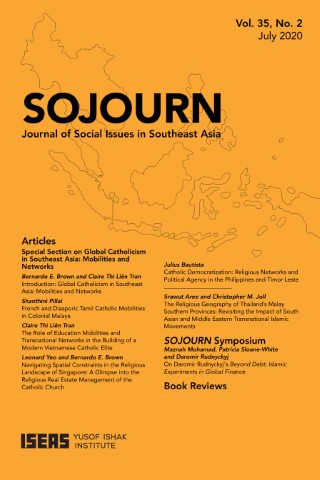
Garzoli, John. 2020. “Competing Epistemologies of Tuning, Intonation and Melody in the Performance of Thai Classical Music on Non-Fixed-Pitch Instruments.” SOJOURN: Journal of Social Issues in Southeast Asia 35(3): 407-436.
Differences between Thai fixed-pitch and non-fixed-pitch musical practice have been described, but there has been no accepted explanation of these differences in relation to the accepted Thai tuning theory. This theory maintains that the Thai scale is equidistant, but it was not formulated to explain the practices and concepts of musicians who sing or play non-fixed-pitch instruments. The absence of an explanation for these practices is attributed to the tendency among scholars to accept assumptions about tuning that were developed for European rather than Thai music. This article is relevant to Southeast Asian studies as it deals with the problem of imported extrinsic theory displacing indigenous explanatory models.
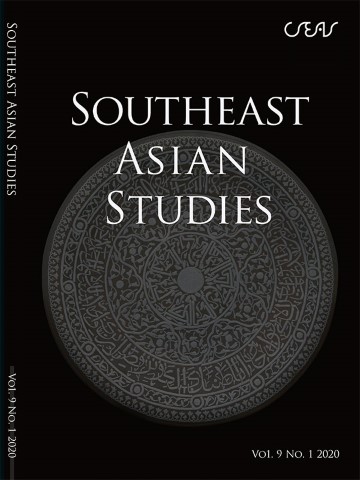
Joll, Christopher and Srawut Aree. 2020. “Thai Adaptations of the Javanese Panji in Cosmopolitan Ayutthaya.” Southeast Asian Studies 9(1): 3–25.
This article considers the curious case study of Thai literary networks in the late Ayutthaya, the networks’ adoption and adaptations of the Javanese Panji epic, and what these innovations reveal about the form of cosmopolitanism that existed until the late Bangkok period. While windows into what we refer to as Siamese cosmopolitanism have been reconstructed by historians in accounts of Persian, Portuguese, Dutch, French, Chinese, and Japanese mercantile networks, our treatment of this important topic expands the units of analysis to include Thai literary networks. Davisakd Puaksom’s excellent doctoral dissertation piqued our interest in Panji’s Siamese adoptions and adaptations, but we set ourselves the task of exploring the utility of Ronit Ricci’s Islam Translated, which analyzes Tamil, Javanese, and Malay sources for Thai studies. We pursue a comparative approach to Southeast Asian historiography in ways that increase the dialogue between Thai studies specialists and members of the Malay Studies Guild. Having described the most important Thai version of this Javanese epic produced by Siamese literary networks from the Ayutthaya through to the late Bangkok period, we consider the principal historical personalities and processes that brought Panji to cosmopolitan Ayutthaya. After providing details about the presence of Javanese individuals and influences in both Ayutthaya and Patani, we introduce insights provided by literary scholars and historians concerning the notoriously ambiguous terms “Java/Jawah/Javanese” and “Malay/Melayu.” These form the foundation for putting forward arguments about Ayutthaya having fostered forms of cosmopolitanism resembling the fluid linguistic and cultural milieu that flourished in other Southeast Asian port polities.
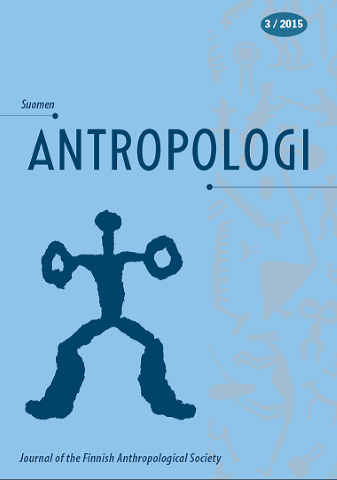
Panagiotopoulos, Anastasios. 2020. “Possessed by a slave, not slavery.” Suomen Antropologi: Journal of the Finnish Anthropological Society 45(4): 3-22.
The present paper is divided into three large steps around the themes of spirit possession and the historical imagination of slavery in Cuba. These three steps reflect both ethnographic dimensions of these themes and broader theoretical approaches towards them. The last step, ‘apomimesis’, is the one proposed by the author, not by way of replacement but displacement. The first step, ‘formulaic’ historical imagination, covers the ground of a direct expression of slavery as historical trauma through spirit possession. The second step, ‘mimesis’, displaces the first by adding into it the possibility of reversal, of empowerment, the slave becoming an anti-slave. The third creates another simultaneous condition. Through the negative dialectics of apomimesis the non-slave emerges.
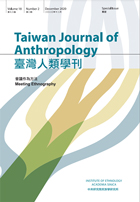
呂欣怡 (Lu, Hsin-yi). 2020. “會議作為未來時間性的匯集與競逐—台灣離岸風電環評的民族誌分析 (The Meeting As Convergence and Competition of Future Temporalities: An Ethnographic Analysis of the Environmental Impact Assessment of Taiwan’s Offshore Wind Development).” 臺灣人類學刊 Taiwan Journal of Anthropology 18(2): 79-128.
環境影響評估,是體制內賦予公民參與科技風險評估的主要管道,因此環評會議經常成為各方表述與論辯開發案之命運的主要戰場。受到晚近人類學時間研究的啟發,本文主張,環評並不只是空間與環境資源分配的折衝,環評會議也是各種歧異之時間性的匯集與競逐。本文以攸關台灣未來能源部署的離岸風電計畫環評為田野場域,把出現於環評會議的意見之時間向度區分為「遠未來」、「近未來」,與「立即的預期時刻」( immediate anticipatory moment)。政府與開發單位透過大型基礎設施的規劃,承諾了一個關於能源結構與海域環境的遠未來,但環評會議主體的專家委員與其審議之環評書件能夠履行的只限於目前的科技能力所及的近未來,而民眾參與環評過程,一方面是受到大型基礎設施計畫所建構的遠未來願景之召喚或激怒;另方面,會議作為各種論述交鋒的意見場域,實作者在其中經驗的是一系列立即的、不可逆的預期時刻,每一個(台上或台下)激昂發聲的時刻,都指向下一個未知瞬間的新開始,而這正是吸引民眾參與會議的重要因素。環評程序從地方說明會、現勘公聽會到中央的專案小組會議過程中,遠未來的討論比重逐漸被近未來的技術預測所取代,而民眾參與的意願也隨之下降。
Environmental impact assessment is the main channel for citizens to participate in science and technology risk assessment within the system, so EIA meetings often become the main battlefield for all parties to express their opinions and debate the fate of an development project. Inspired by recent anthropological theorization on time and temporality, this paper argues that the EIA is not just a negotiation of the allocation of space and environmental resources. The EIA meeting is also a convergence of competing temporalities. This article uses the EIA meetings for an offshore wind development project as the field site and the topic of analysis, in which the future of Taiwan energy deployment is at stake. I divide the temporal dimensions of the opinions expressed in the EIA meetings into the "distant future", the "near future", and the "immediate expectation moment." The government and the developer have promised a grand vision of the distant future of the energy structure and marine environment through the planning of large-scale infrastructure. However, the expert committee members of the EIA meeting can only perform in the near future that can be grasped by current scientific and technological capabilities. The public participation in the EIA process is, on the one hand, summoned or provoked by the long-term vision promised by largescale infrastructures; on the other hand, the meeting is a field of opinion for discursive confrontation, in which the actors experience a series of immediate and irreversible anticipatory moments. Every moment of excited evocation (on or off stage) points to a new beginning of the next unknown moment, and this is the main factor that attracts people to participate in the meetings. During the EIA process, from local briefings and public hearings to ad hoc committee meetings in the conference room of the EPA, the proportion of discussions about the distant future has gradually been replaced by near-future technical predictions, and thus the enthusiasm for public participation has also declined.

Pilbrow, Tim. 2020. “The integrative value of conflict and dispute: Implications for defining community in the native title context.” The Australian Journal of Anthropology 31 (1): 37-50.
Claimants and industry professionals frequently view conflict that arises in the course of a native title claim as a detriment to timely claims resolution. I argue instead that disputation itself may constitute an integrative social process through which participants define, delimit and reproduce community. I show also how ethnographic analysis of disputation can provide useful insights into broader social and cultural practices and normative value systems. Drawing on theoretical and methodological concerns with human agency and the integrative and constitutive role of conflict that challenges consensus models of community, I develop a practice-centred approach that is attentive to the ways that participants in a dispute articulate and contest the definition of community. The possibility of viewing 'culture' and group cohesion as contingent and emergent through disputation should assist anthropologists working in the native title field to incorporate conflict as a productive aspect of social and cultural practice.

Francia, Betty, Leticia Poliak, and Pablo Gatti Ballestero. 2020. “Experiencias de trabajo de campo Antropológico en imágenes.” Trama 1(11): 64 - 111.
El acto cultural está presente en cada una de estas imágenes que nosaportan esa mirada tan compleja como el acto en sí mismo. Los sentidosobran de mediadores y nos atreveremos a decir, patrimonializadores. Esla vista en primera instancia que nos coloca en la imagen, pero tras ella, un trabajo sensible con lamirada antropológica y la evocación a los cinco sentidos que configuran la complejidad cultural que,en definitiva, nos pertenece. La antropología social desde lo visual es otra forma de abordaje que nos plantea una mirada complejay nos permite integrar la cotidianeidad como lenguaje expresivo.No solamente las acciones en suspenso forman parte de esa trama instantánea, sino también la percepciónsensorial.

Costa, Roberto. 2020. “BUILDING AN INDIGENOUS MUSEUM IN THE VATICAN: Some Papuan Directions for Indigenising Museums.” TSANTSA–Journal of the Swiss Anthropological Association 25: 141-152.
Debates around the significance, function and social value of museums are still challenging museum practices and models. In particular, the demands of “source communities” for self-representation and self-emancipation in the global community continue to call into question the role of the museum as a catalyst for promoting social change across cultures. In this paper, I push this question further by discussing the desires of a group of Roman Catholic woodcarvers in central Asmat (Indonesian Papua) to build a museum for exhibiting their carvings in the Vatican. To them, the Vatican is not only the sacred centre of Catholicism but also an integral part of their mythical world of ancestors. After a brief examination of their considerations, I attempt to put their ambitious museum idea into dialogue with current debates on “the postcolonial museum” to highlight how it can dictate new directions for indigenising museums.

The purpose of this reflection is to draw attention to the effects that recent political transformations have produced on people’s subjectivity by observing clues to how these events are inscribed in daily relations. We approach both those who feel affected by or vulnerable to escalating discourses and practices of sexist, racist, homophobic and class violence, and others who have in some way adhered to conservative and exclusionary discourse. We are directly interested in the subjects, many of whom are devastated, who in their efforts, amazement, and negotiations interest us, not specifically the events to which we refer. As will be noted, the category “suffering” is central to this debate.
O objetivo dessa reflexão é chamar atenção para o efeito que as transformações políticas recentes têm produzido na subjetividade das pessoas: trata-se de observar pistas sobre como esses acontecimentos se inscrevem nas relações cotidianas. Procuraremos uma aproximação tanto daqueles que vêm se sentido atingidas ou vulneráveis diante da escalada dos discursos e das práticas de violência sexista, racista, homofóbica e de classe como dos que de algum modo aderiram ao discurso conservador e excludente. São os sujeitos, muitos dos quais devastados, que em seus esforços, espantos e negociações nos interessam e não os eventos aos quais nos referimos diretamente. Como será possível notar, a categoria “sofrimento” se mostra central nesse debate.
